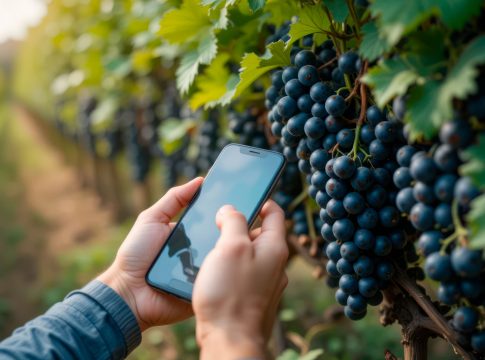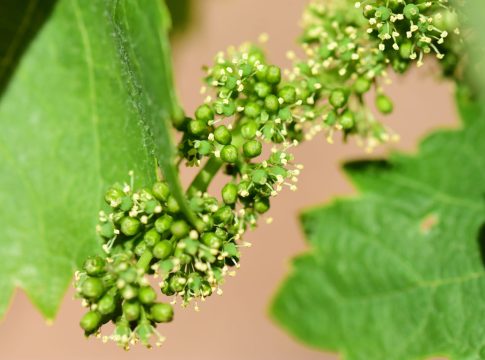
La posizione di primissimo piano che il Cabernet sauvignon occupa nel mondo fra le varietà a bacca rossa, è certamente imputabile alla capacità di accumulare notevoli quantitativi di sostanze fenoliche (vedere VQ n. 3/2014, Giugno), che conferiscono intensità e stabilità al colore dei suoi vini, e alla sua componente aromatica legata a composti di diversa natura chimica (acidi, aldeidi, esteri, chetoni, alcoli, polialcoli ecc.), accomunati...
LEGGI L'ARTICOLO A FIRMA DI GIULIANA CATTAROSSI E GIOVANNI COLUGNATI
PER APPROFONDIRE
(approfondimenti a cura degli Autori)
Bibliografia
Allen M.S., Lacey M.J., Brown W.V., Harris L.N. (1989). Occurrence of methoxypyrazine in grape of Vitis vinifera cv. Cabernet sauvignon and Sauvignon blanc. Compte rendu du IV Symp. d’Œnol. de Bordeaux, Dunod Paris. In Actualités d’Œnologiques 89: 25-30. Allen M.S., Lacey M.J., Harris L.N. (1993). Methoxypyrazine grape flavour: influence of climate, cultivar and viticulture. Wein-Wiss. 48: 211-213. Allen M.S., Lacey M.I. e Boyd S. (1994). determination of methoxypyrazine in red wines by stable isotope dilution gas-chromatography mass spectrometry. J. Agric. Food Chem. 42: 1734-1738. Battistutta F., Colugnati G., Bregant F., Crespan G., Tonetti I., Celotti E., Zironi R. (1997). Influence of genotype on the methoxypyrazines content of Cabernet sauvignon cultivated in Friuli. Proc. 5th Int. Symp. on Grapevine Physiology, Jerusalem, 25-30 maggio, 123-134. Carbonneau A., De Biasi C., Falcetti M., Zardini F. (2003). La maturazione delle uve in clima caldo. L’Informatore Agrario 36: 53-59. Forde C., O’Riordan P., Frank D. (2005). From Vine To Wine: Understanding Cabernet Sauvignon Flavour. Sensory and Consumer Science-Food Science Australia/CSIRO 38thAIFST, Sydney, 11thJuly: 234-245. Francis I.L., Kassara S., Noble A.C. (1998). The contribution of glucosidic precursors to Cabernet Sauvignon and Merlot aroma: sensory and compositional studies. In The chemistry of wine flavor, Waterhouse A.L. and Ebeler S.E. (Eds.), ACS Washington D.C.: 1-19. Ojeda H., Andary C., Kraeva E., Carbonneau A., Deloire A. (2002). Influence of Pre- and Postveraison Water Deficit on Synthesis and Concentration of Skin Phenolic Compounds during Berry Growth of Vitis vinifera cv. Shiraz. Am. J. Enol. Vitic. 4: 261-267. Parker R.M. (1991). “Bordeaux: A Comprehensive Guide”, 2a edizione. Ed. Dorling Kyndersley: London. Roujou De Boubée D. (2003). Reserches sur la 2-methoxy-3isobutylpyrazine dans les raisins et dans les vins. Gand Prix Academie Amorim. www.academie-amorim.com Roujou De Boubée D., Dubourdieu D. (1999). Incidence des conditions de maturation et des pratiques viticoles sur la maturation des raisins de Cabernet sauvignon et de Merlot à Bordeaux. Œnologie, 8º Symp. Int. d’Œnol. Ed. Tec. & Doc., Paris: 126-130. Scienza A., Failla O. (2004). Situazioni pedoclimatiche e comportamento di alcuni vitigni del Collio. Atti del Convegno “Progettare un uvaggio: la viticoltura, l’enologia, gli aspetti economici”, Gorizia, 10 giugno. Tandonnet J.P., Ollat N., Neveux M., Renoux J.L. (1996). Effect of three levels of water supply on the vegetative and reproductive development of Merlot and Cabernets sauvignon grapevines. In Proc.7° ISHS Workshop on water relation on grapevines. Acta Hort. 493:301-307. Kotseridis Y., Razungles A., Bertrand A., Baumes R. (2000). Studio sull’aroma dei vini Merlot prodotti nella regione bordolese. Atti Convegno Merlot, Aldeno (TN), 28 ottobre: 34-42.











